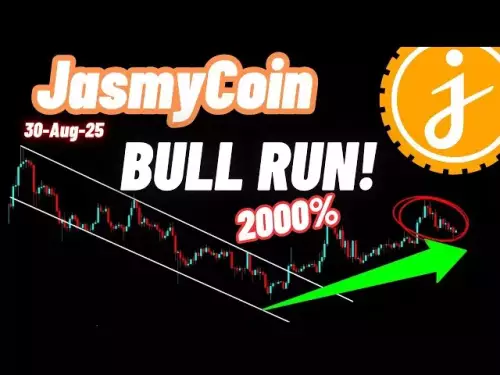-
 Bitcoin
Bitcoin $108800
0.43% -
 Ethereum
Ethereum $4353
0.12% -
 Tether USDt
Tether USDt $1.000
-0.01% -
 XRP
XRP $2.809
-0.56% -
 BNB
BNB $858.7
-0.02% -
 Solana
Solana $201.2
-1.21% -
 USDC
USDC $0.9999
0.00% -
 Dogecoin
Dogecoin $0.2153
1.48% -
 TRON
TRON $0.3385
0.33% -
 Cardano
Cardano $0.8194
-0.22% -
 Chainlink
Chainlink $23.37
0.07% -
 Hyperliquid
Hyperliquid $44.01
0.08% -
 Ethena USDe
Ethena USDe $1.001
0.01% -
 Sui
Sui $3.289
0.87% -
 Stellar
Stellar $0.3592
-0.16% -
 Bitcoin Cash
Bitcoin Cash $542.1
1.62% -
 Cronos
Cronos $0.3106
11.50% -
 Avalanche
Avalanche $23.74
1.06% -
 Hedera
Hedera $0.2256
-0.15% -
 UNUS SED LEO
UNUS SED LEO $9.496
0.22% -
 Litecoin
Litecoin $110.2
0.47% -
 Toncoin
Toncoin $3.125
2.15% -
 Shiba Inu
Shiba Inu $0.00001234
1.67% -
 Polkadot
Polkadot $3.791
0.69% -
 Uniswap
Uniswap $9.688
1.54% -
 Dai
Dai $0.0000
-0.01% -
 Bitget Token
Bitget Token $4.531
0.00% -
 Aave
Aave $316.4
1.13% -
 Monero
Monero $257.2
-0.14% -
 Ethena
Ethena $0.6525
2.68%
What are the risks of staking crypto?
Cryptocurrency staking carries risks like market volatility, lock-up periods, slashing penalties, smart contract flaws, and regulatory uncertainty, potentially leading to significant losses despite earning rewards.
Aug 30, 2025 at 10:01 pm
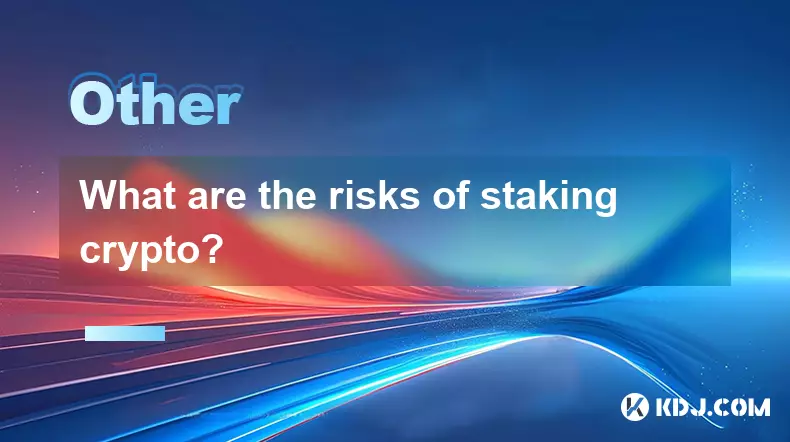
Risks Associated with Cryptocurrency Staking
1. Market volatility can severely impact staked assets. The value of cryptocurrencies is highly unpredictable. Even if staking rewards accumulate, a sharp decline in the token’s price can result in net losses. A user may earn consistent yield, yet see their total portfolio value drop due to broader market conditions.
2. Lock-up periods restrict liquidity. Many staking protocols require assets to be locked for a fixed duration. During this time, investors cannot sell or transfer their tokens. If an emergency arises or a better investment opportunity appears, the inability to access funds can be a significant drawback.
3. Slashing penalties are enforced by many proof-of-stake networks. Validators who act maliciously, go offline, or fail to validate correctly may have a portion of their staked tokens confiscated. Even users delegating to validators are exposed to this risk if their chosen validator performs poorly or violates network rules.
4. Smart contract vulnerabilities pose a serious threat. Staking on decentralized platforms often involves interacting with smart contracts. Bugs or exploits in the code can lead to loss of funds. High-profile hacks in DeFi protocols have previously resulted in millions of dollars in staked assets being stolen.
5. Regulatory uncertainty surrounds staking activities in many jurisdictions. Authorities may classify staking rewards as taxable income or even as securities offerings. Sudden regulatory changes could force platforms to delist certain tokens or restrict staking services, impacting user access and profitability.
Network and Protocol Risks
1. Consensus failures can disrupt staking operations. If a blockchain network experiences a fork, outage, or governance dispute, staking rewards may be delayed or invalidated. In extreme cases, users might need to choose between competing chains, creating confusion and potential loss.
2. Inflationary tokenomics can erode returns. Some blockchains issue new tokens as staking rewards, increasing the total supply. If the inflation rate exceeds demand growth, the token’s value may decline despite earning rewards, effectively reducing real yield.
3. Centralization risks emerge when a small number of validators control a large share of staked tokens. This undermines the decentralization principle of blockchain and increases the likelihood of collusion or censorship. Users staking with dominant validators contribute to this concentration.
4. Upgrade risks occur during network transitions. Major protocol upgrades, such as Ethereum’s shift to proof-of-stake, can introduce unforeseen bugs or require user intervention. Failure to adapt to new requirements may result in lost rewards or stranded assets.
5. Token-specific risks vary widely. Some projects have poorly designed staking mechanisms, unclear vesting schedules, or hidden fees. Due diligence is essential to avoid tokens with weak fundamentals or governance models that could jeopardize staked holdings.
Counterparty and Platform Risks
1. Centralized exchanges offering staking services may not fully disclose how they manage user funds. In some cases, they re-stake user assets without consent or use them for proprietary trading. If the exchange faces insolvency, staked assets might not be recoverable.
2. Custodial risks increase when users rely on third parties. Staking through custodial wallets means relinquishing control of private keys. If the service provider is hacked or shuts down unexpectedly, access to staked tokens can be lost permanently.
3. Exit scams are a concern in less reputable staking platforms. Some projects advertise high yields to attract users but disappear with the funds. These scams often target inexperienced investors who prioritize returns over security audits and transparency.
4. Misleading yield representations can distort expectations. Annual percentage yields (APYs) are often advertised based on current conditions, which may not be sustainable. As more users stake, rewards per participant typically decrease, leading to lower actual returns than projected.
5. Insurance coverage for staked assets is nearly nonexistent. Unlike traditional financial products, most crypto staking platforms do not offer insurance against loss. Users bear full responsibility for safeguarding their investments, even in cases of platform failure.
Frequently Asked Questions
Can staked crypto be stolen?Yes, staked cryptocurrency can be compromised through smart contract exploits, exchange hacks, or phishing attacks. Even though tokens are locked in a staking mechanism, vulnerabilities in the platform or user error can lead to theft.
Does staking crypto affect my tax obligations?Staking rewards are typically considered taxable income in many countries. The moment rewards are received or become accessible, they may need to be reported at their fair market value, regardless of whether they are sold.
What happens if a staking network gets hacked?If a blockchain network suffers a critical attack, staked assets may be at risk depending on the nature of the breach. In proof-of-stake systems, a successful attack could lead to double-spending, chain reorganization, or slashing of validator stakes, impacting all participants.
Can I unstake my crypto at any time?Not always. Many networks enforce unbonding periods that can last days or weeks. During this time, tokens are neither earning rewards nor available for trading. Some platforms also charge early withdrawal penalties.
Disclaimer:info@kdj.com
The information provided is not trading advice. kdj.com does not assume any responsibility for any investments made based on the information provided in this article. Cryptocurrencies are highly volatile and it is highly recommended that you invest with caution after thorough research!
If you believe that the content used on this website infringes your copyright, please contact us immediately (info@kdj.com) and we will delete it promptly.
- Layer Brett vs. Dogecoin Pepe: The Meme Coin Evolution
- 2025-08-31 02:45:15
- Dogecoin, Staking Rewards, and Layer Brett: The Meme Coin Evolution
- 2025-08-31 02:45:15
- Pudgy Party: How Pudgy Penguins are Revolutionizing Web3 Gaming with Skins and PENGU Tokens
- 2025-08-31 03:05:12
- BlockDAG's Presale Bonus & Crypto Cycle Domination: A 2025 Must-Buy?
- 2025-08-31 03:50:12
- BlockDAG's Hybrid Tech & Presale Challenge: A 2025 Crypto Game-Changer
- 2025-08-31 03:10:12
- Dogecoin, Musk, and Crypto Treasuries: A Match Made in Meme Heaven?
- 2025-08-31 04:30:36
Related knowledge

What are the risks of staking crypto?
Aug 30,2025 at 10:01pm
Risks Associated with Cryptocurrency Staking1. Market volatility can severely impact staked assets. The value of cryptocurrencies is highly unpredicta...
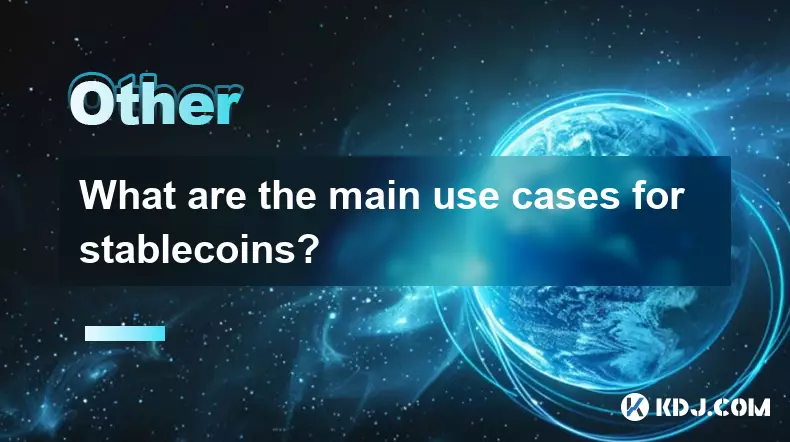
What are the main use cases for stablecoins?
Aug 30,2025 at 03:41am
Main Use Cases for Stablecoins 1. Stablecoins serve as a reliable medium of exchange in volatile cryptocurrency markets. Traders often convert their h...

What is a "vampire attack" in DeFi?
Aug 29,2025 at 09:36pm
Understanding the Concept of Vampire Attacks in DeFi1. A vampire attack in the decentralized finance (DeFi) space refers to a strategic effort by one ...
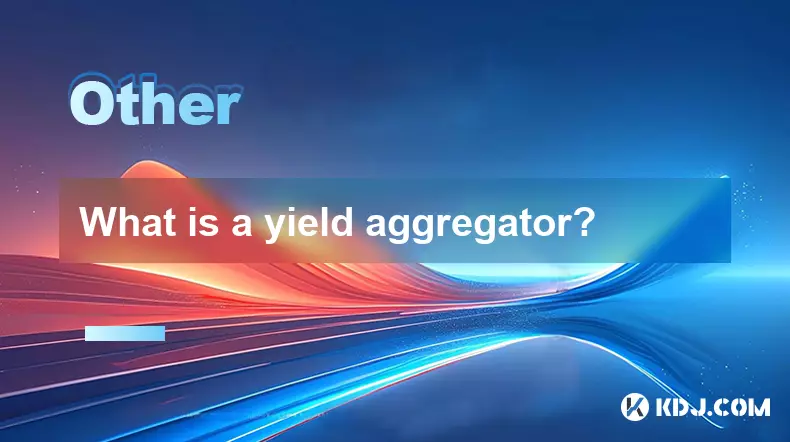
What is a yield aggregator?
Aug 30,2025 at 12:36pm
Understanding Yield Aggregators in the Crypto Space1. A yield aggregator is a decentralized finance (DeFi) platform designed to automate and optimize ...
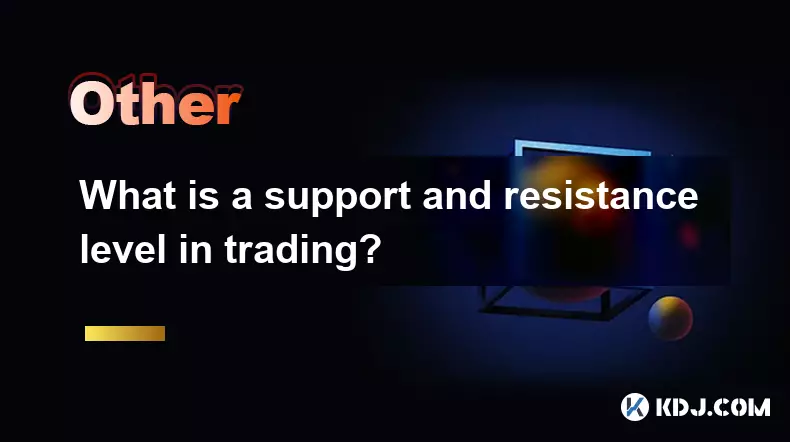
What is a support and resistance level in trading?
Aug 29,2025 at 07:00pm
Understanding Support and Resistance in Market Dynamics1. Support and resistance levels are foundational concepts in technical analysis, widely used b...

What is the difference between market cap and fully diluted valuation?
Aug 30,2025 at 09:37pm
Understanding Market Capitalization in the Cryptocurrency Space1. Market capitalization, often referred to as market cap, is a measure used to rank th...

What are the risks of staking crypto?
Aug 30,2025 at 10:01pm
Risks Associated with Cryptocurrency Staking1. Market volatility can severely impact staked assets. The value of cryptocurrencies is highly unpredicta...

What are the main use cases for stablecoins?
Aug 30,2025 at 03:41am
Main Use Cases for Stablecoins 1. Stablecoins serve as a reliable medium of exchange in volatile cryptocurrency markets. Traders often convert their h...

What is a "vampire attack" in DeFi?
Aug 29,2025 at 09:36pm
Understanding the Concept of Vampire Attacks in DeFi1. A vampire attack in the decentralized finance (DeFi) space refers to a strategic effort by one ...

What is a yield aggregator?
Aug 30,2025 at 12:36pm
Understanding Yield Aggregators in the Crypto Space1. A yield aggregator is a decentralized finance (DeFi) platform designed to automate and optimize ...

What is a support and resistance level in trading?
Aug 29,2025 at 07:00pm
Understanding Support and Resistance in Market Dynamics1. Support and resistance levels are foundational concepts in technical analysis, widely used b...

What is the difference between market cap and fully diluted valuation?
Aug 30,2025 at 09:37pm
Understanding Market Capitalization in the Cryptocurrency Space1. Market capitalization, often referred to as market cap, is a measure used to rank th...
See all articles























